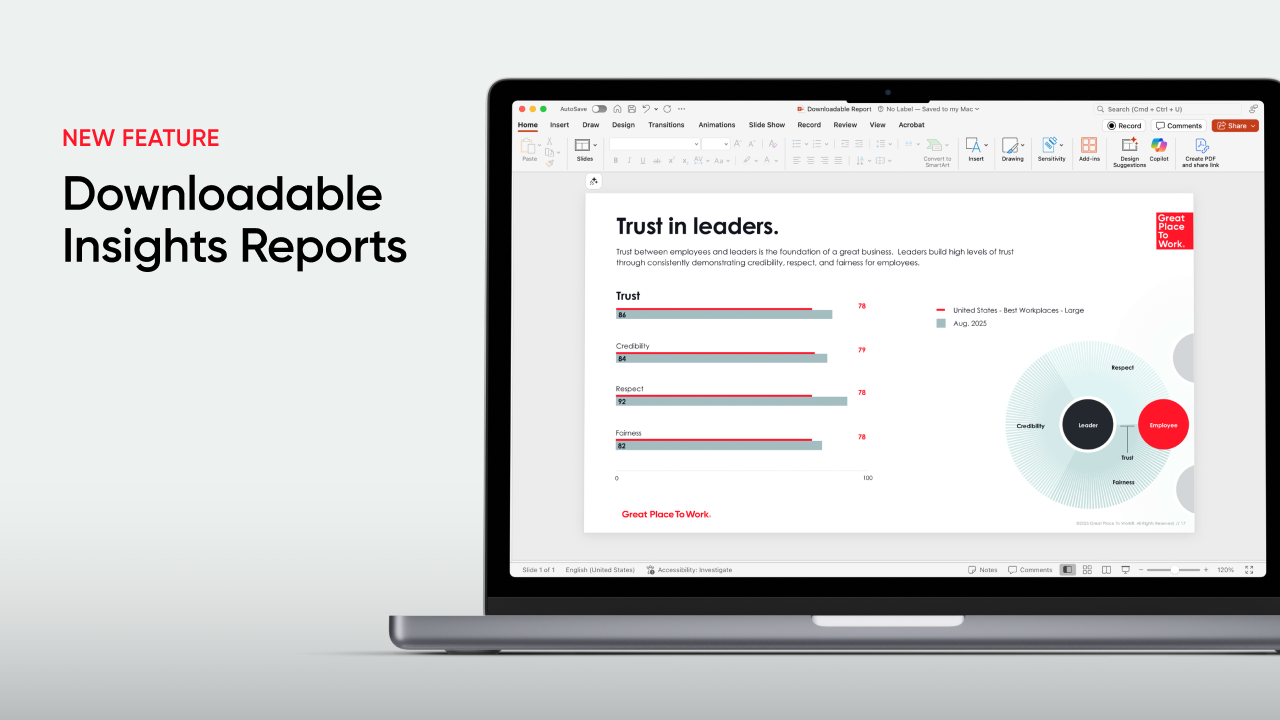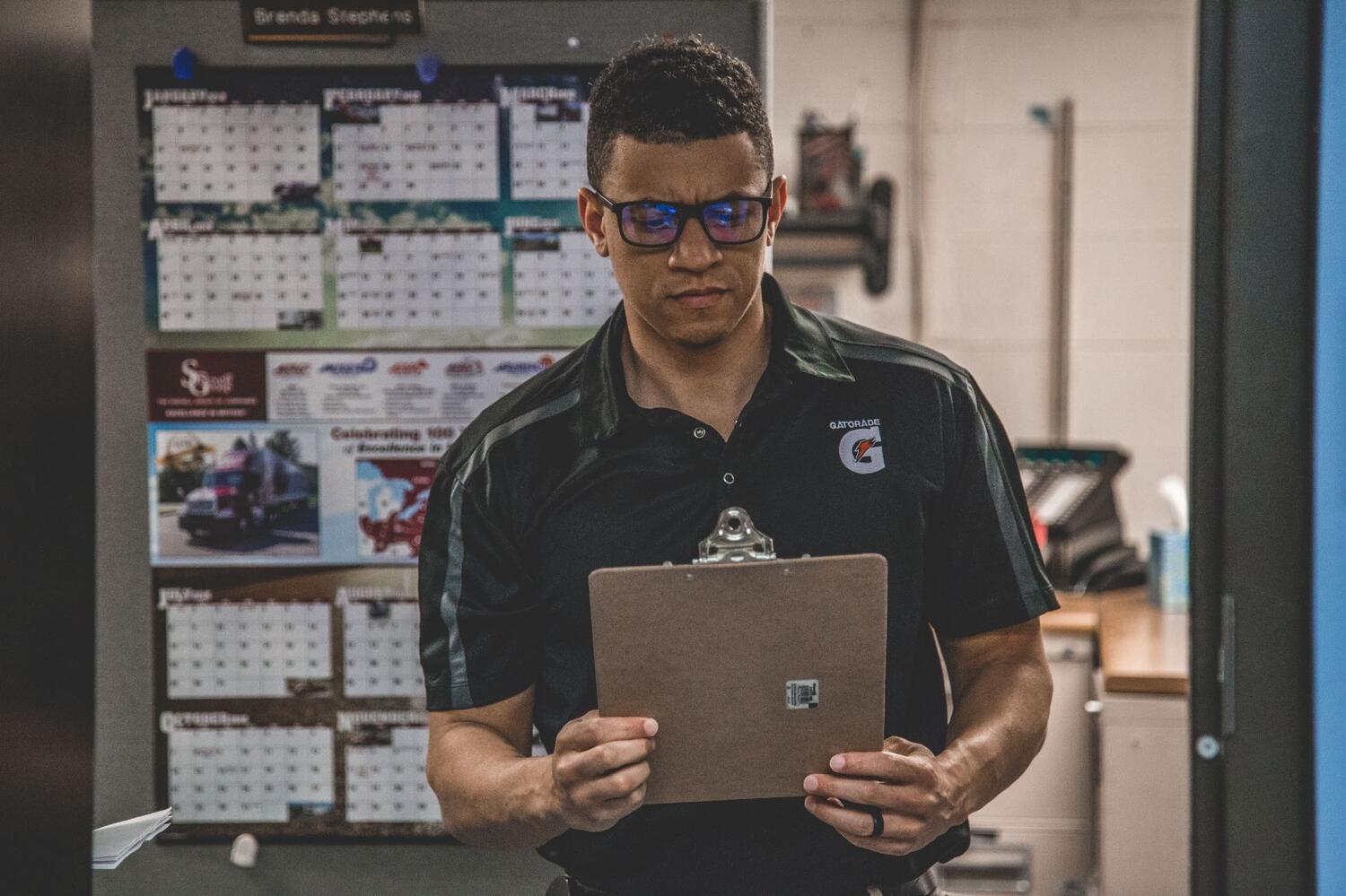Elements of Company Culture, Employee Experience, Employee Recognition, Leadership & Management, Thanking
Employee recognition is not a one-size-fits-all. The five languages of appreciation in the workplace help managers inspire great performance and retain top talent.
When employees feel appreciated, everyone benefits.
Performance and retention go up, and employees are more likely to go above and beyond their regular duties — which in turn can boost your business’s bottom line.
And these days, recognition is more important than ever. While convenient, an increase in remote work makes it difficult for employees to feel connected, and fast-paced schedules, economic uncertainties, and rapid technological changes can quickly lead to burnout. The result? Increased absenteeism, presenteeism, and job dissatisfaction.
Research from the Society of Human Resource Management found that 44% of surveyed U.S. employees feel burned out at work, and 45% feel “emotionally drained” from their work.
Learn your employees’ languages of appreciation
The first step to forging a valuable working relationship among employees and creating a culture of recognition is learning each other’s primary language of appreciation. If you can express genuine appreciation for a co-worker’s specific contribution or how their actions reflect company values, you’ll increase loyalty, improve employee experience and cut down staff turnover.
This topic is explored at length by author Gary Chapman in “The Five Languages of Appreciation in the Workplace.” Chapman is widely known for his seminal work, “The Five Love Languages,” which examines how different personality types give and receive love. His follow-up book, co-written with psychologist Paul White, discusses how managers can effectively show appreciation and encouragement for their employees.One of the ways workplaces can mitigate employee burnout and increase connection is by promoting a culture of belonging through genuine support and appreciation.
How to use the five languages of appreciation at work
Authentic appreciation is individual. One employee may welcome an invitation to a football game, whereas another might favor a simple — but specific — word or note of thanks. Which of the five languages of appreciation you choose to express should depend on what people prefer.
Employee recognition vs. employee appreciation
Recognition and appreciation in the workplace overlap, but they are not identical. Recognition is typically tied to performance and can lead to promotions and pay raises. Appreciation is broader and not as formal as recognition; it may even serve as encouragement for a struggling employee. You can express appreciation for an employee embodying company values or for a singular act that benefited the organization.
Consider these two scenarios:
- Global recognition: A high-ranking boss delivers “thank you for your service” remarks to a group of workers who’ve gathered to celebrate career milestones. They eat cake and compare matching gifts. It’s a happy occasion, but not very personalized.
- Individual and authentic appreciation: A manager asks if they can have a 10-minute check-in with a direct report and provides positive feedback. She thanks them for the long hours and creative thinking on a tight budget that led to the success of a major project they just wrapped.
Formally recognizing employees for their achievements and tenure will always be welcome in the workplace. But regularly expressing enough appreciation in a casual manner is an accessible and direct way to make your staff feel valued.
Global praise and generic gifts can’t compare to sincere, precise actions that promote a more positive work environment and instill a sense of workplace pride and ownership.
“It’s important to pay people what they’re worth, but it’s not enough,” says Michael C. Bush, CEO of Great Place To Work. “Special recognition makes you feel like a person who is needed, not just an employee. It’s motivating to be recognized for a job well done, whether you punch a timecard on the frontlines or log into your laptop from home. For that to happen, everyone needs an opportunity to contribute and be seen for their accomplishments.”
Identifying another person’s language of appreciation
Recognize your co-workers and their individual efforts, character traits, and personal motivations. Tailor your appreciation language to suit each person in appropriate ways with these two steps:
- Observe. Consider how your co-workers express genuine appreciation to others, whether it’s through words of praise or a thoughtfully selected gift. Often, how someone treats another person is exactly how they’d like to receive appreciation. An individual can benefit from different languages of appreciation as well, not just one.
- Listen attentively. Work backwards by noting what people complain about. It could be a lack of facetime with a superior or the need for extra help under a looming deadline.
Global praise and generic gifts can’t compare to sincere, precise actions that promote a more positive work environment and instill a sense of pride and ownership.
What are the five languages of appreciation in the workplace?
1. Words of affirmation
These can be verbal or written. Whichever approach you take, be as specific as possible. A generic “good job” won’t be as compelling or effective as taking the time to compliment a certain skill set or action. Maybe an employee’s quick thinking last Tuesday saved your company thousands of dollars. Perhaps a staffer’s savvy networking helped hook a lucrative new client. Some employees prefer words of praise, but first know your audience:
- Verbal affirmations can take place on a stage in front of hundreds or in a one-on-one meeting. Some employees may welcome positive remarks in front of their co-workers, while others prefer a quick, low-key mention in passing.
- Written affirmations are also an effective way of showing appreciation. But again, consider how you relay the message, and whether the recipient prefers public or private compliments. A handwritten note can deliver more impact than an everyday email. These notes don’t have to be long — just honest and personalized.
2. Quality time
This means giving a colleague your undivided attention. Encouraging people can be as straightforward as showing up for them, truly listening, and affirming their feelings. Even your body language — when open and responsive — can convey interest and support.
You can give your time in many ways, including:
- Sharing a meal or drink
- Going on walking breaks during the day
- Holding small group sessions to hear your employees’ concerns
- Hosting a volunteer day where co-workers gather for community service and giving activities
- Inviting employees to a fun, off-site problem-solving activity
3. Acts of service
If you see a co-worker buckling under an immense workload, should you offer a coffee mug or your assistance? Many workers don’t want another calendar or tote bag with the company logo. They don’t crave praise, either. They simply want to see others working as hard as they do or pitching in as needed.
But first, ask if they want your help. Don’t assume, because that could be misinterpreted in a negative way. Play detective to see what work needs completion. Avoid doing a task that gives you the limelight. Perhaps you could make copies, send follow-up emails, or schedule a meeting while your colleague updates the CEO.
Whatever you do, stay positive and follow through. This is key. If you offer to help, do so in a timely manner.
4. Gifts
If your co-workers appreciate tangible gifts, make sure you personalize them. Take extra effort to note their interests in your day-to-day conversations. Issue company-wide surveys to each employee to learn about their favorite foods, interests, and activities or outings.
In remote workplaces, where it can be especially challenging to get to know one another, have your staff complete a questionnaire that gives you a glimpse into their hobbies and passions, pet peeves, and favorite music/movies/shows/books. Giving generic gifts can be perceived as wasteful and thoughtless, so keep a log of ideas. Your presents don’t need to be lavish, just tailored.
Here are some ideas to get you started:
- An employee loves coffee, especially from the independent shop down the block. Instead of emailing them a Starbucks gift card, make an effort to grab one from their preferred cafe.
- A co-worker is running ragged between work and family duties. They’ve commented on how difficult it is to get dinner on the table. Gift a meal-kit subscription or a prepared meal that just needs reheating.
- An inexpensive yet thoughtful token of employee appreciation can be in the form of a favorite treat. It shows you’ve been paying attention.
5. Physical touch
In Gary Chapman’s first book on appreciation, “The Five Love Languages,” physical touch is a logical expression of love between family or friends. But this is the thorniest of the five languages of appreciation in the workplace.
Appropriate physical touch in the office depends on HR guidelines and the recipient’s own feelings. Do not touch anyone who does not want to be touched — no exceptions.
For colleagues who do feel valued by appropriate physical touch, it’s critical to respect boundaries. Handshakes, fist bumps, and high-fives are typically acceptable. Showing genuine appreciation with these brief but uplifting acts can go a long way in expressing your gratitude.
Physical touch shouldn’t be the primary way you show appreciation in the workplace, but a pat on the shoulder doesn’t have to be forbidden, either.
How to apply the 5 languages of appreciation at scale
Showing appreciation doesn’t need to be complicated, and you can easily incorporate different languages of appreciation by being intentional with your messaging and timing.
Here are some practical, repeatable ways companies can embed appreciation into their daily operations, rather than relying on one-off gestures:
- Offer onboarding surveys: Ask new hires how they prefer to receive appreciation (e.g., verbal praise, private notes, small gifts).
- Supply managers with toolkits: Equip managers with a short guide and recognition calendar that includes prompts for using different appreciation languages across the team.
- Make shout-outs part of regular communications: Consider a “shout-out” portion in your team meetings and internal newsletters. Or consider a blog-style shout-out channel on your intranet or on Teams/Slack.
- Encourage peer shout-outs: Embed peer appreciation into weekly team meetings by allowing team members to recognize one another using their preferred language.
- Integrate with pulse surveys: Add a recurring pulse survey question asking employees how seen and appreciated they feel — with optional follow-up on preferred styles of recognition.
- Have executives share appreciation for employees: Encourageyour top leaders to recognize people for living out the values or going above and beyond. While executives often recognize their reports, it’s even better if they can share a skip-level recognition — an individual contributor who is two levels (or more) below the C-suite.
Make appreciation part of your company culture
The five languages of appreciation in the workplace don’t just apply to managers and their direct reports. Anyone at any level can express appreciation to and for co-workers. Peer-to-peer appreciation can even carry more weight and points to a strong company culture of inclusion, support, and work relationships.
Learn how to foster a culture of appreciation and how it can benefit your business with our Employee Well-being Report. It highlights key differences across industries, demographics, and job types, and gives you actionable steps to create a healthier work environment.
Elevate employee experience
Ensure your best people thrive and stay. Benefit from continuous culture support and our proven model to keep your team committed.











